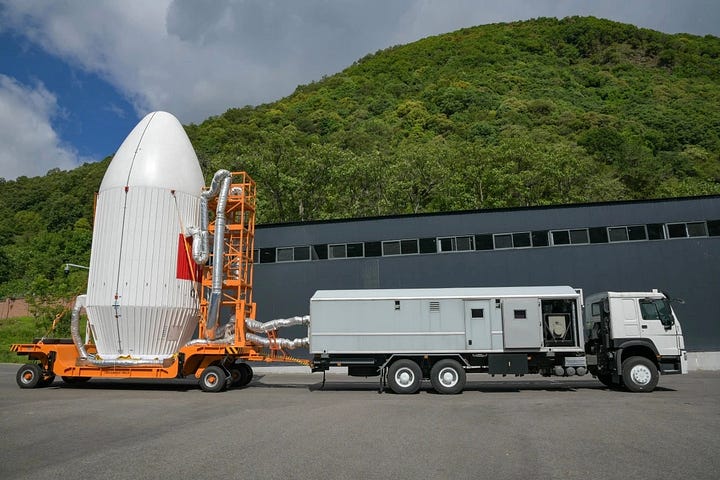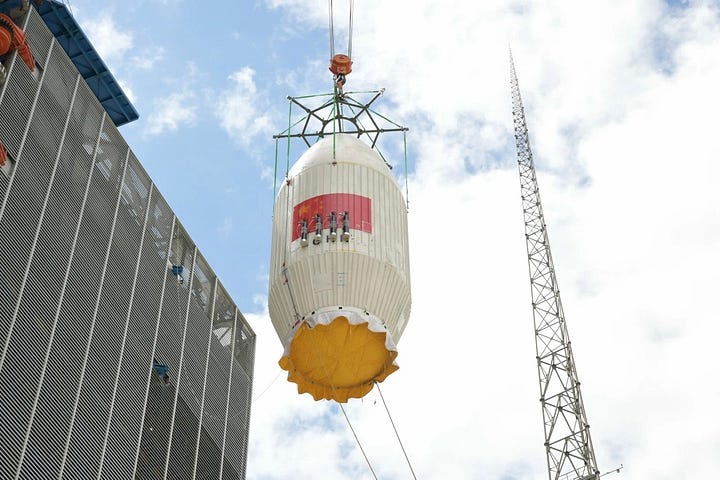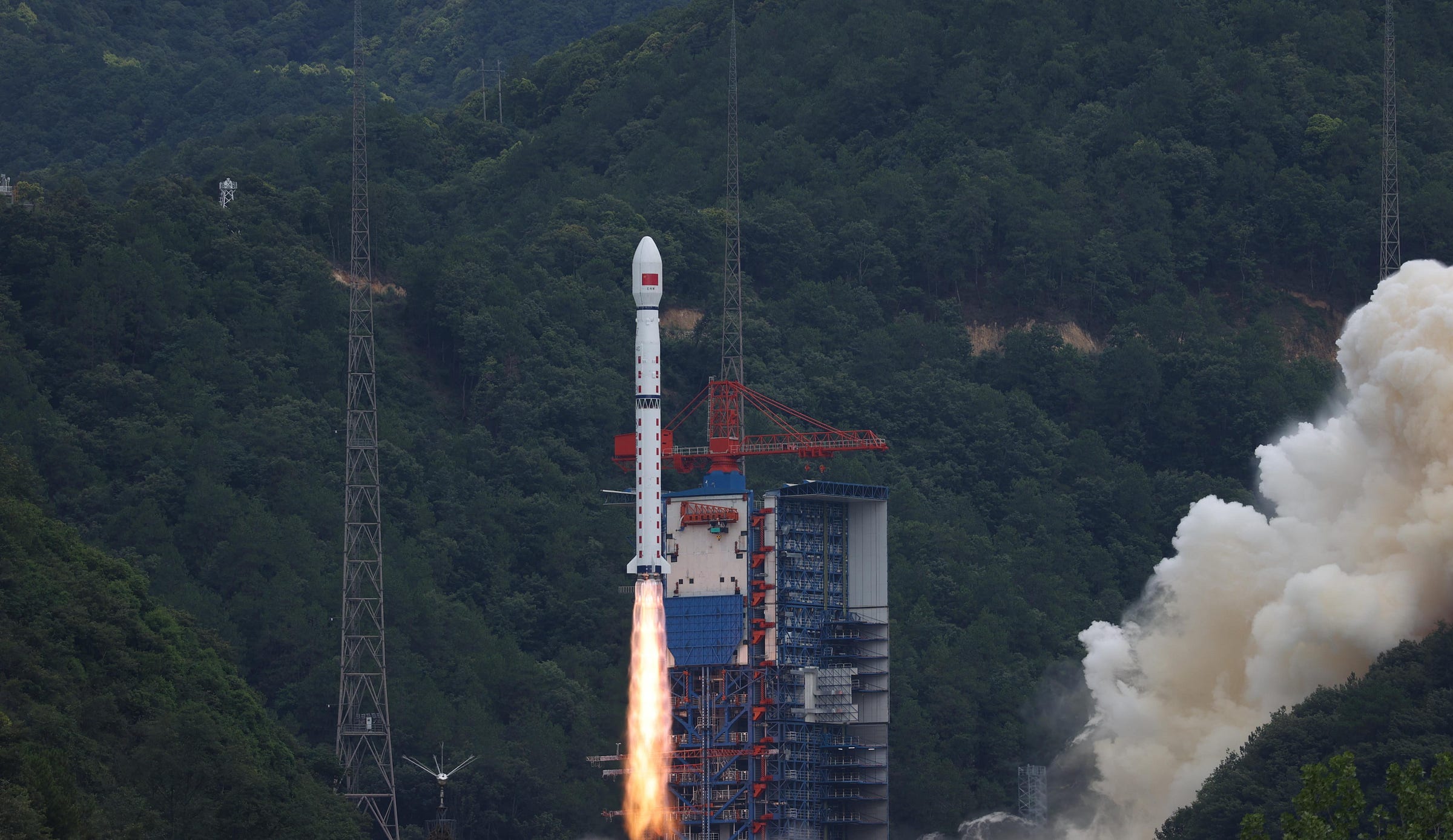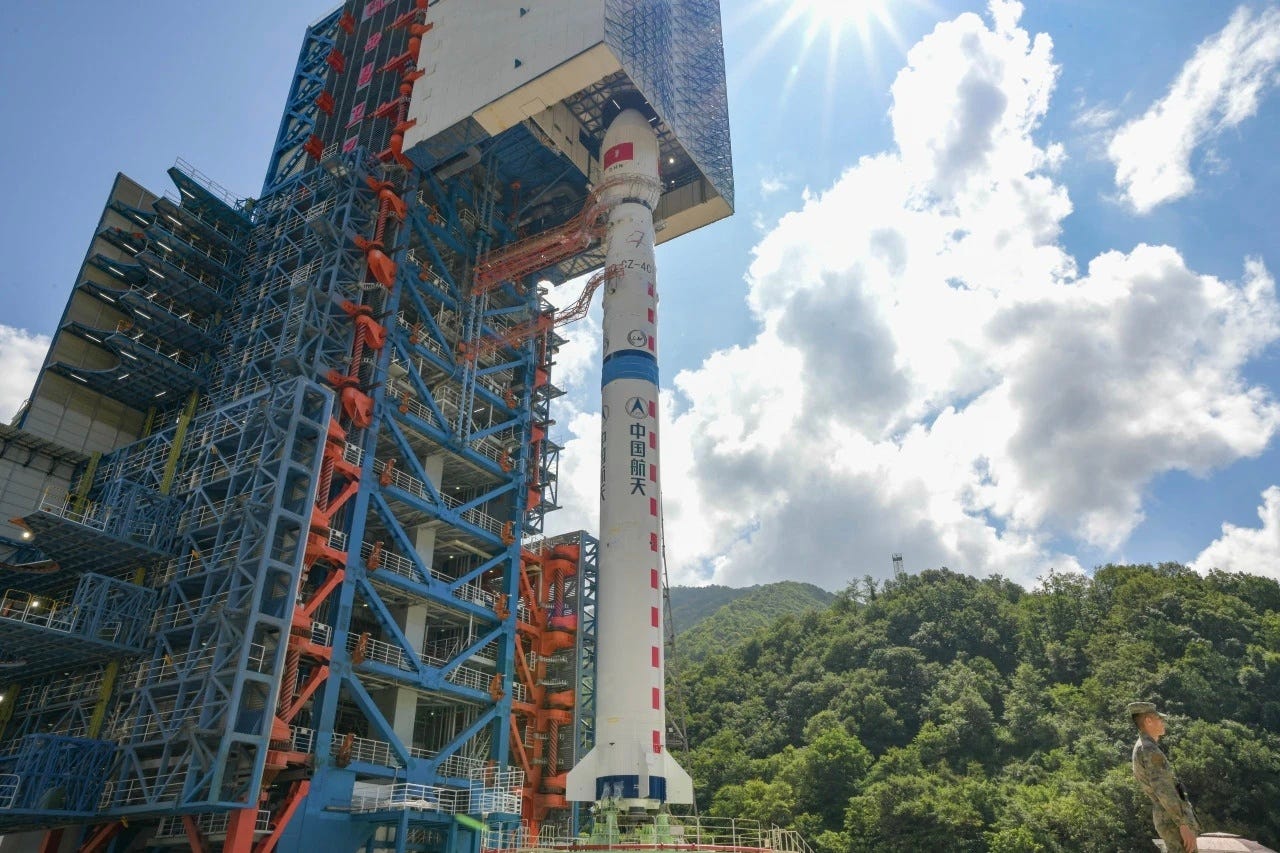Test Satellite From the Mountains [Long March 4C Y63]
Another space monitoring satellite was delivered to orbit.
A Long March 4C lifted off from Launch Complex 3 at the Xichang Satellite Launch Center at 17:35 pm China Standard Time (09:35 am Universal Coordinated Time) on July 3rd, with a single satellite atop of the rocket bound for low Earth orbit.
The sole satellite was Shiyan-28B-01 (试验二十八号B星01星), developed by the Innovation Academy for Microsatellites, Chinese Academy of Sciences (中国科学院微小卫星创新研究院). According to the Academy for Microsatellites, Shiyan-28B-01 will be used for space environment detection and related technical tests. This may include tracking other spacecraft and debris and sending the data back to Earth.
Details on today’s satellite are few, but Shiyan satellites for a similar task were six Shiyan-27 (试验二十七号) spacecraft launched in April of this year.
Shiyan (试验) is a satellite designation used for technology development spacecraft, and the name literally translates to test or experiment. Shijian (实践) is a similar designation for more mature technology tests.
In its post-launch blog post for today’s mission, the Shanghai Academy of Spaceflight Technology noted that the launch took place during the rainy season at Xichang, with comprehensive rain and moisture protection measures implemented to protect hardware on the rocket. Additionally, with the launch rate from the site growing, launch teams closely coordinated with site personnel to ensure fast but smooth testing and preparations.
With the launch of a Long March 4C earlier today, this was the first non-Long March 3A series rocket (consisting of the Long March 3A, 3B, 3C) to fly from Xichang this year. Previous launches of the Long March 4 series to fly from Xichang include two Long March 4B missions in August and September 2024. The only other time the Long March 4C flew from the site was carrying the Queqiao lunar relay satellite (鹊桥号中继卫星) in 2018.
Today’s launch was the 56th mission for the Long March 4C, the 111th launch for the Long March 4 series, the 239th Long March vehicle from the Shanghai Academy of Spaceflight Technology, and the 583rd launch of the Long March launch vehicle series. This was also the 37th launch from China in 2025.
Liftoff video via Cosmic Penguin on Bluesky and 中国航天科技集团 on Weibo.
Check out the previous Long March 4C launch
More SAR imaging capabilities [Long March 4C Y59]
On October 16th at 07:45 am China Standard Time, or at 23:45 pm Universal Coordinated Time on October 15th, a Long March 4C blasted off from Launch Area 4 at the Jiuquan Satellite Launch Center. After entering sun-synchronous orbit, the Gaofen-12 05 satellite wa…
What is the Long March 4C?
This section is for those less familiar with China's Long March series of launch vehicles.
The Long March 4C is another older generation low Earth and sun-synchronous orbit workhorse of the Shanghai Academy of Spaceflight Technology. All three stages of the rocket burn Dinitrogen Tetroxide and Unsymmetrical Dimethylhydrazine, with the third-stage capable of engine restart.
The payload capacity of the launch vehicle is currently as follows:
4,200 kilograms to low Earth orbit
2,800 kilograms to a sun-synchronous orbit
1,500 kilograms to a geostationary transfer orbit
The first-stage is powered by four YF-21C engines, which generate 302 tons of thrust, burning Dinitrogen Tetroxide and Unsymmetrical Dimethylhydrazine. The second-stage is powered by a single YF-22C engine and four YF-23C verniers that generate 80 tons of thrust while also burning Dinitrogen Tetroxide and Unsymmetrical Dimethylhydrazine. The third-stage is propelled by two YF-40A engines that provide 10 tons of thrust by once again burning Dinitrogen Tetroxide and Unsymmetrical Dimethylhydrazine.
On the launch pad, the Long March 4C is 45.9 meters tall and weighs 249,200 kilograms when fully fuelled. The first and second-stage have a diameter of 3.35 meters, while the third-stage has a diameter of 2.9 meters, and a fairing diameter of 3.8 meters.
So far, the Long March 4C has flown from all three inland launch sites, the Jiuquan Satellite Launch Center, the Taiyuan Satellite Launch Center, and the Xichang Satellite Launch Center.









![More SAR imaging capabilities [Long March 4C Y59]](https://substackcdn.com/image/fetch/$s_!Ts4P!,w_1300,h_650,c_fill,f_auto,q_auto:good,fl_progressive:steep,g_auto/https%3A%2F%2Fsubstack-post-media.s3.amazonaws.com%2Fpublic%2Fimages%2F37634aea-07be-40bd-bf66-12488c9e47be_3840x1995.jpeg)
